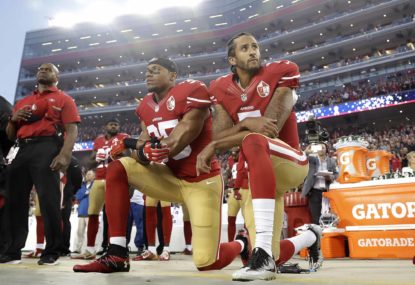From football hero to Hollywood star to infamous accused murderer: Muted tributes for OJ Simpson
The extraordinary episodes after his life as an American Football hero quite overshadowed the career of O.J. Simpson, who has died at the age…

Nike’s decision to make former NFL quarterback, Colin Kaepernick, the face of its 30th university campaign was met with both support and criticism.
While some applauded the multinational corporation’s choice of ambassador, others protested by setting fire to their Nike shoes and sportswear.
Kaepernick began making headlines in 2016 when he decided to kneel during the pregame national anthem in protest of the oppression of people of colour and ongoing issues with police brutality. Since then he has been blacklisted from the NFL, despite leading his former side the San Francisco 49ers to the Super Bowl.
Almost immediately the campaign went viral. Celebrities, athletes, politicians, and the public showered social media with opinions.
According to analysis firm Talkware; there were 2.7 million mentions of Nike between midday Monday and midday Tuesday – a 1,400 percent increase over the day prior.
The brand received more than $43 million worth of media exposure in the first 24 hours after the campaign dropped.
Jonah Berger, author of ‘Contagious: Why Things Catch On’, suggests the science of physiological arousal could be the key to why campaigns like Nike’s go viral.
While the idea of positive and negative emotions have been around for thousands of years, more recently psychologist have argued that emotions can be classified based on physiological arousal.
“Some emotions, like anger and anxiety, are high arousal,” Berger states.
“When were angry we yell at customer service representatives.
“Positive emotions also generate arousal… When inspired by awe we cant help wanting to tell people what happened. “
Nike realised the important role that emotional arousal plays in sharing.
Rather than finding a simple matter of positive emotions increasing sharing and negative emotions decreasing it, Berger found some negative emotions like anger significantly increase sharing.
Despite what many people might have said about it, the reason the Kaepernick campaign went viral was not because it was either positive or negative, it went viral because it provoked high arousal emotions.